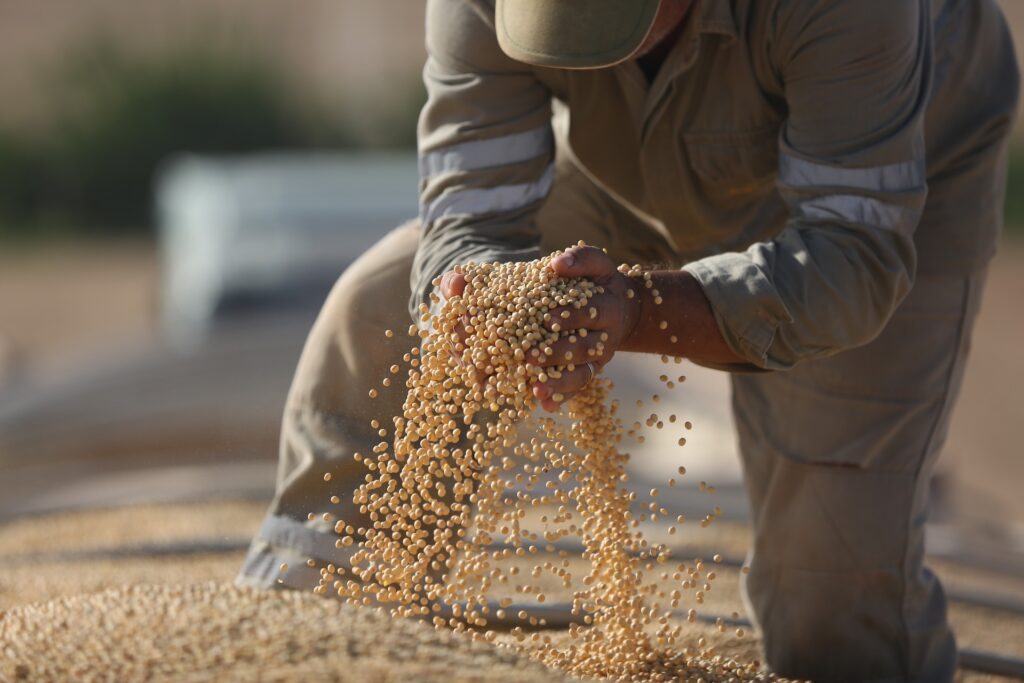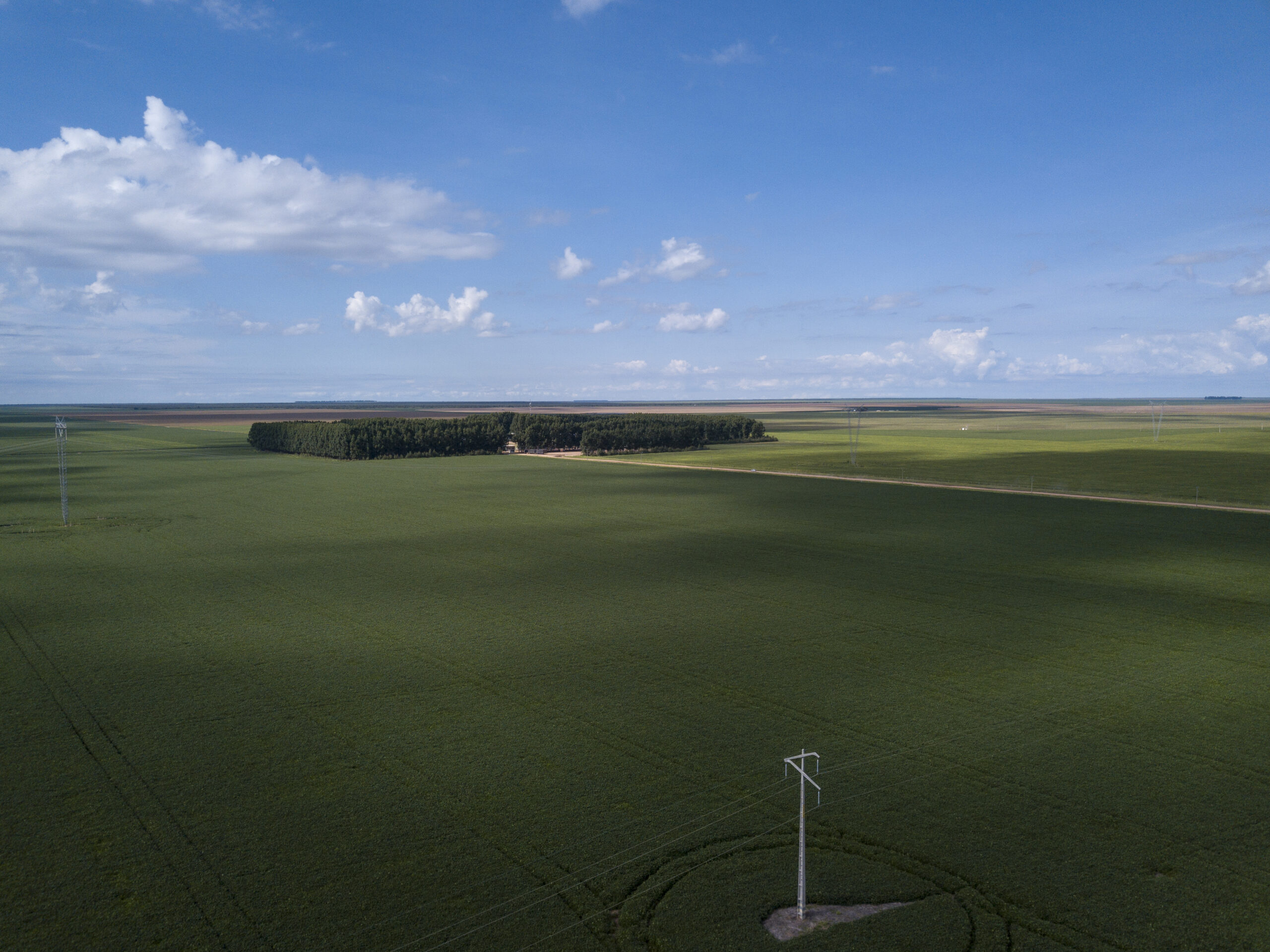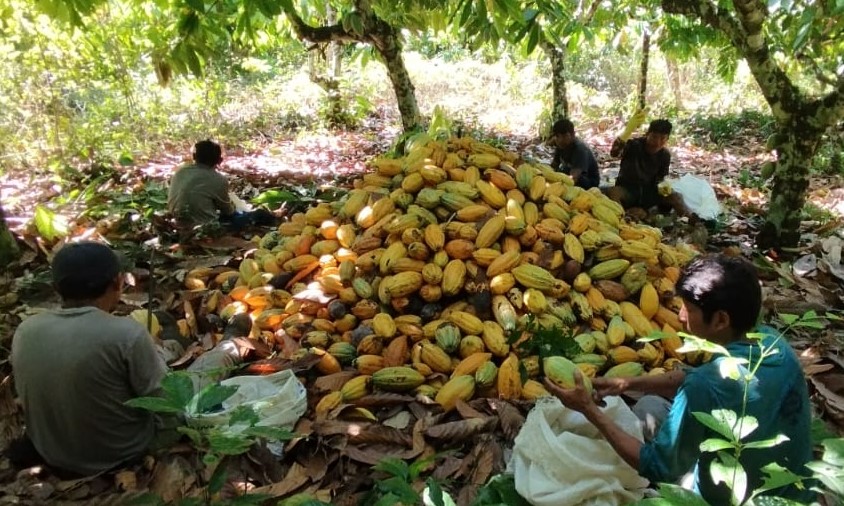BETWEEN 2022 AND 2023, the state of Piauí (Brazil) authorized the deforestation of 78.6 thousand hectares of native vegetation. For just ten properties, authorizations totaled 42.9 thousand hectares, equivalent to four times the area of Paris. Of the 99 authorizations granted in the period, 59 were for properties located in the Cerrado, where deforestation reached record levels last year.
“If Brazil truly wants to reduce its emissions, we can no longer make this division between legal and illegal deforestation. All deforestation is deforestation and is impacting the forest, indigenous peoples, and biodiversity”, points out João Gonçalves, senior director of the organization Mighty Earth in Brazil. Last Thursday (14), the NGO published a report on how the recent deforestation of nearly 60 thousand hectares in the Cerrado and Amazon is linked to soybean production and the supply chains of multinational companies.
In 2023, the loss of native vegetation in the biome totaled 7,828 km² (782,800 hectares), a number 43% higher than the previous year, according to data released in January by the National Institute for Space Research (INPE in Portuguese). During the same period, deforestation in the Amazon decreased by 50%. For the first time, deforestation in the Cerrado exceeded that of the Amazon biome.
Deforestation is Brazil’s main contribution to global warming. In 2022, changes in land use accounted for 48% of gross carbon dioxide equivalent emissions (metric used to compare emissions of different greenhouse gases), according to calculations by Climate Observatory.
The Ministry of the Environment estimates that 50% of Cerrado devastation occurred with authorization, but there is no precise survey of this proportion. Due to the lack of transparency from states and incomplete information sharing between state agencies and the federal government, not even the Ministry knows exactly what the total authorizations for deforestation issued throughout Brazil are.
In response to the report, the Secretary of the Environment and Water Resources of Piauí stated that all authorization requests are analyzed by environmental tax auditors from the agency, following criteria such as property regularity and evaluation of reforestation proposals for what is intended to be suppressed. It also stated that Piauí only contributes 0.95% of the CO2 emitted by Brazil and invests in the recovery of degraded areas. Read the full responses here.
ASSINE NOSSA NEWSLETTER
7.8 thousand soccer fields deforested
The largest authorizations were issued for soybean, corn, cotton, and cattle producers in the agricultural expansion region known as Matopiba, formed by predominantly cerrado areas in the states of Maranhão, Tocantins, Piauí, and Bahia.
In the city of Baixa Grande do Ribeiro, four authorizations allowed the deforestation of 22.7 thousand hectares. The municipality is the second largest in Piauí, with an area of 7.8 thousand km² (or 780 thousand hectares). Projections from the Ministry of Agriculture and Livestock indicate that the municipality’s agricultural production is expected to grow by 31.7% over the next 10 years.
Located in Baixa Grande do Ribeiro, Fazenda Emaflor holds the largest authorization for deforestation granted in Piauí over the past two years. In September 2023, the property, owned by Emaflor Empreendimentos Rurais e Participações and managed by Grupo AZN, obtained the green light to deforest 7.8 thousand hectares within it.
Grupo AZN has as a partner Alzir Pimentel Aguiar Neto, a soybean producer from Piauí and vice president of the Brazilian Association of Soybean Producers in the state (Aprosoja-PI). Alzir Neto himself also secured authorization for the suppression of 4.8 thousand hectares of Cerrado in the area next to Fazenda Emaflor. The purpose of deforestation, according to a report presented to SEMARH-PI, is to create a new property for cattle breeding.
Fazenda Emaflor is a soybean supplier for Bunge, according to data from invoices accessed by Repórter Brasil. In the 2022/2023 harvest, the grain harvested on the property was sent to the multinational’s unit in Uruçuí (state of Piauí).

The American company has made a public commitment to “zero deforestation” in its supply chains from 2025 onwards. In response to the report, Bunge reaffirmed its commitment and said it monitors its soybean suppliers to identify openings in new areas. “After the date established by our policy, farms that plant soybeans in recently cleared areas will be automatically excluded from the supply chain,” it said. Read the company’s full statement here.
Repórter Brasil also attempted to contact producer Alzir Neto, Grupo AZN, and Emaflor Empreendimentos Rurais e Participações, but received no response by the time of this report’s publication.
From Bunge’s silos spread throughout Matopiba, Brazilian soy reaches the world. In 2023, the multinational’s main customers were located in France, Germany, and Spain. Spain is also the second largest soy importer produced in Piauí, behind only China.
A new trade barrier does not protect Cerrado
Brazilian exports of soy, cattle, palm oil, coffee, timber, rubber, and cocoa associated with the recent deforestation of native forests are about to face new trade barriers. In December 2024, a new law will come into force in the European Union that prevents the import of products from deforested areas after December 31, 2020 – without distinguishing whether the deforestation occurred legally or illegally.
However, the legislation does not include areas considered “non-forest”, according to the concept of the Food and Agriculture Organization of the United Nations (FAO). As a result, 73% of the Cerrado falls outside the scope of the law, according to estimates from a study by the Climate Observatory.
The European law is part of the bloc’s strategy to become greenhouse gas emissions neutral by 2050. But for Ana Carolina Crisostomo, a Conservation specialist and leader of WWF Brazil’s Zero Conversion strategy, the decision to exclude the Cerrado from the new law ignores that most of Brazil’s “imported” emissions by the bloc are associated with deforestation and grain production concentrated in the biome. “Excluding the Cerrado is an attempt to ‘find a way out’ of not solving the most serious and difficult problem,” she summarizes.
“We are campaigning for these other forest areas to be included in the regulation review, which will happen this year,” emphasizes João Gonçalves, from Mighty Earth. “In Brazil, we have the Cerrado, the Pantanal, but we also have the Chaco, the Pampas, and other areas in West Asia and Africa that were left out of the scope.”
In addition to the new European law, other existing trade agreements are broader in blocking production associated with deforestation. The main example is the Soy Moratorium, a voluntary initiative endorsed by the largest global grain buyers, which entails boycotting soy planted in deforested areas after 2008 in the Amazon. The expansion of a similar agreement for the Cerrado has been advocated for years by civil society organizations, but the idea has not progressed due to a lack of support from the productive sector. There are many areas susceptible to authorized deforestation in the Cerrado. In terms of profit, it’s not worth looking at this biome. It only becomes worthwhile when legislation like that of the European Union arrives, imposing this on the major trading companies,” evaluates Ana Carolina Crisostomo, from WWF-Brazil.
Less protected biome
While the legal reserve area on farms in the Amazon biome must be 80% of the total property, according to the Brazilian Forest Code, in the Cerrado, this percentage drops to 20%, except for properties in the Cerrado located in Legal Amazon states. In this case, the percentage is 35%.
“The Cerrado has always been seen as a less relevant biome, initially due to a lack of understanding of its complexity, its biodiversity. There is also a common sense that there is nothing there, that it is a region that should be destined for commodity production,” points out Crisostomo, from WWF-Brazil. The specialist states that, in addition to less protective legislation for the Cerrado, there is a “lack of control over emissions from Vegetation Suppression Authorizations”.



